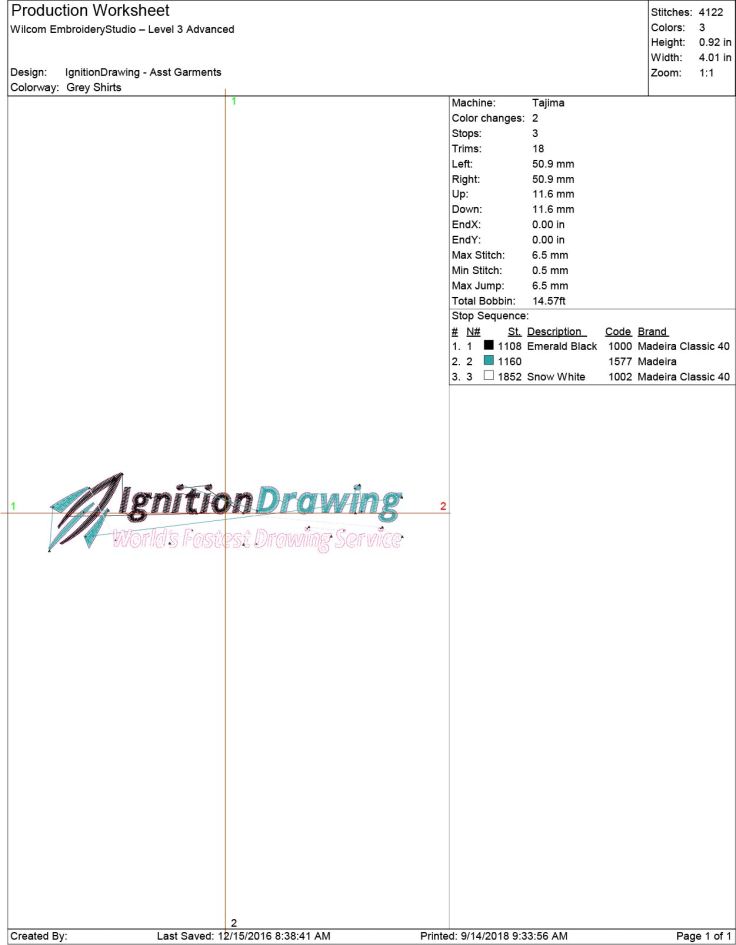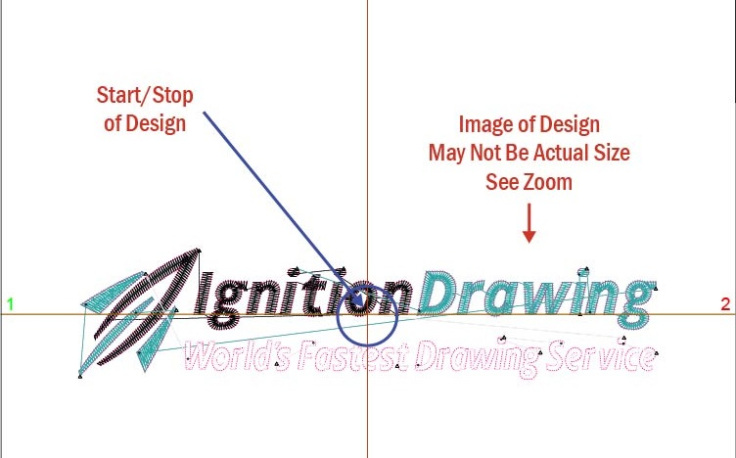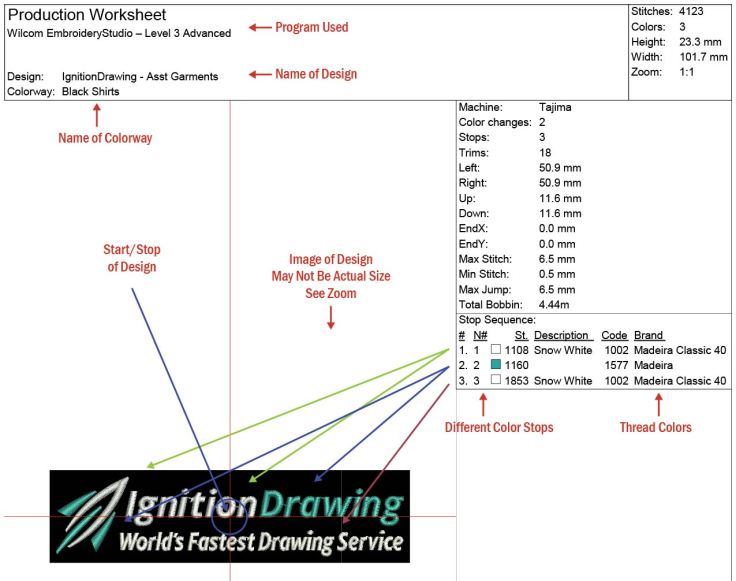How to Read Run Sheets
Run sheets are a way to know how to program your colors in the machine without having the software directly wired to your embroidery machine. A run sheet has the breakdowns of how many color stops there are.
Some run sheets will show icons for each color stop, but most just have the color breakdowns. Here is a typical run sheet.

The top of the page will usually have the name of the design, the color way (if applicable) and information like the actual size of the design and the size of the image of the design that is printed.

A colorway is a grouping of colors. The original colorway shown is for grey shirts. On this design we have 3 color stops with the letters Ignition and parts of the rocket in black and World’s Fastest Drawing Service in white. Another color way may be for black shirts and will show World’s Fastest Drawing Service in white and Ignition Drawing in white also.
The run sheet will often have information like size of logo, size of image of logo and the name of the design.

Here is an example of a different colorway. This one is for black shirts. As you can see, We now have the first color stop (the rocket and letters Ignition) being in white thread. Everything else stays the same.

Think of the run sheet as being a list of suggestions. None of this is set in stone. You can change every color stop to black, or white if you want. The only thing you can’t do without editing is splitting up a color stop. With this design, you can not have “World’s Fastest” be one color and “Drawing Service” be a different color because the words are on the same color stop.
So in closing, a run sheet will contain the information you need to correctly program your embroidery machine. It has color break downs, amount of trims and a picture of the logo and much more. Remember, you can always make a logo with multiple color stops all the same color as you want and the thread color picked may not match what you or your embroidery company may have but that doesn’t prevent them from using a different color.